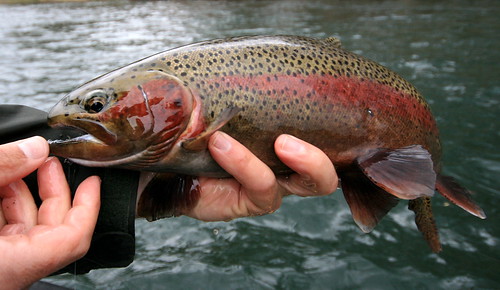![Stephen]()
We’ve talked about wool quite a bit this month. We’ve talked about wool’s properties, history, and even the way it has influenced our language. Wool is the fiber of civilization for so many reasons. One of the most basic is that wool is nature’s first line of defense against the elements. In the age of tech-fibers and synthetics, it’s interesting to read this testimonial from Stephen. He’s a sportsman, model, and wool apparel enthusiast who wrote to tell us exactly how wool saved his life. This is his story.
My name is Stephen and I am a 25 year old model living in New York City. I work as a captain at the Manhattan Yacht Club and hold a 100 ton Coast Guard captains license. In my free time I rock climb, cross country ski and mountain bike, all within the city limits of Manhattan. I have a great respect for wool, since I owe it my life.
Last January I was Cross Country Skiing up in New York’s Adirondack Park. It was sometime during the first polar vortex and I was home spending some time with my family. Our property is connected to one of the largest pieces of public land in the country and we had a fresh blanket of powder, so I decided to go for a solo ski out through my back woods to the lake. After making my way through a half mile of frozen swamp, passing by the beaver dams, the old fallen oaks and hitting the estuary of Dunhams Bay Brook, I was nearly to the main part of Lake George. It was cold. When I say cold, it was record cold, somewhere around negative 30 degrees Fahrenheit. Because of this, I chose to wear wool knee socks, a thick wool sweater and a wool cap layered into my clothing.
I remember the sky being as blue as I had ever seen it and the trees a crisp evergreen as I skied my way onto the main part of the lake. I had been going over water of the estuary for over an hour and assumed that the lake would be just as safe. I was about 100 feet or so from shore when I heard it. CRACK. I looked down and there was black water where white ice once held me. I knew I was going in and there was nothing to be done about it. I immediately went into shock and had no sensation of the actual temperatures that I was being submitted to. I wanted to avoid hyperventilation so I took slow and calculated breaths.
What did I need to do to survive? I attempted to pull myself out of the hole, but the ice kept breaking under my weight. I was able to slide both poles and remove one ski before my hands had lost all feeling. The ice was too thick to chop through and too thin to support me, so, with one ski on, it became clear that I would have to do a series pulling myself up and breaking through the ice to make it back to shore.
I kept my focus on breathing. I have to thank yoga for teaching me to breathe because that is likely one of the first reasons I was able to make it to shore alive. I continued pushing my way to the nearest dock and ignoring the slow break down that my body was experiencing. One push at a time, that is all that mattered. The next push. By the time I got to the dock of the summer home, the right side of my body (which still had a ski attached) was spent and numb. My left side had retained some energy because my leg was able to kick, which kept whatever warmth I had more into that side. I slung my right arm like a rope around the dock post and then the left, and using every last (and I mean every last) bit of energy that I had, pulled myself from the freezing waters.
I was not out of the woods just yet. My right leg was still stuck because of the ski attached. Instead of panicking, I took a few more breaths and calmly found a way to free my right leg from the water. I was not able to take the ski off so I ripped off the whole boot with it and ran up to the deserted summer home (Lake George is a summer colony in upstate New York so the homes are all empty and no one is around for miles). With my still-booted left foot, I desperately tried to kick down the glass door, but that door was solid. I looked around and saw another home further down the lake. This one had an old style windowpane on their green door and I was able to punch through on my first go.
The house was not winterized, so the pipes were frozen solid. No hot water. I found some lighters but my fingers were useless at this point so it would seem that I would need to find another way to warm up. Not to mention I was also bleeding now from breaking in. All over the house there were the plastic bins. I began to tear them open to look for a blanket, a quilt, anything. The last bin I opened had a quilt in it, in which I quickly wrapped myself.
My adrenaline was ebbing and I was starting to wonder about my fate. I still didn’t have a working phone and I didn’t have a means to thoroughly warm myself. As I attempted to use my frozen fingers to light some newspaper, I saw out of the corner of my eye, a 1970s phone sitting on a stack of dusty phone books underneath a desk. I picked it up… and there was a dial tone. I found out later that the phone was not in service but lucky me, you can always call 911.
When the rescuers came to save me, I was bleeding, shivering desperately and had no feeling in most of my body. My fingers would not regain the ability to feel for 4 months. I had never been this cold in all my life and later when my friend had come to pick me up at the hospital, the doctors told me that the wool keeps you warm even when it gets wet, unlike cotton which would have been like having sheets of ice directly on your body. If I were not wearing wool socks I likely would have had frostbite in my legs and needed an amputation. If I were not wearing a wool sweater, my heart would have likely failed. Ever since learning this, I have been throwing away my cotton clothing and replacing it with wool.
If wool saved my life there is a chance it could save someone else’s too.
Stephen kept his cool and stayed calm. His survival was in part due to wool, but it was also his quick thinking, excellent physical condition, and determination to live that saved him. That, and a good old-fashioned land line. And he wants you all to know that the beanie and shirt he’s wearing in the photo above are absolutely made of wool!
Stay warm, and stay woolly.
![]()
![]()
![]()


 This beautiful blanket is available at Pendleton-usa.com. We suggest you take it along on your next adventure.
This beautiful blanket is available at Pendleton-usa.com. We suggest you take it along on your next adventure.








































